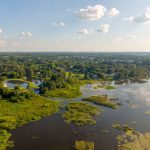Mitigation Banking Industry Insights: U.S. House of Representatives Encourages Streamlined Approval of Bank Credits
Last week saw significant developments in the mitigation banking industry as the full Appropriations Committee approved the U.S. House of Representatives FY2024 Energy & Water Development Appropriations Report. A notable section of the report underlines the potential of mitigation banks to expedite project delivery.
Highlighting the Potential of Mitigation Banks
According to the approved language in the report, the Committee acknowledges the promise mitigation banks hold for accelerating project delivery. Specifically, the Corps is urged to approve mitigation bank credits swiftly, ensuring the process aligns with existing laws and regulations.
Additionally, the Corps is prompted to continue enhancing the application of the mitigation hierarchy under the 2008 Compensatory Mitigation Rule. This rule is crucial to the mitigation banking industry, designed to counteract unavoidable impacts on wetlands, streams, and other aquatic resources authorized by the Department of the Army permits.
The call for a more efficient approval process for mitigation bank credits and continued improvements in the application of the mitigation hierarchy reflects the growing recognition of the importance of mitigation banks in environmental sustainability and conservation efforts.
Key Figures in the Discussion
The House Interior & Environment Subcommittee, comprising the Environmental Protection Agency (EPA), plays a pivotal role in these developments. Among the Republicans, the subcommittee includes Rep. Mike Simpson (ID) – Chair, Rep. Chris Stewart (UT), Rep. Mark Amodei (NV), Rep. Guy Reschenthaler (PA), Rep. Michael Cloud (TX), Rep. Ryan Zinke (MT), and Rep. Jake Ellzey (TX).
The Democrat members of the House Interior & Environment Subcommittee are Rep. Chellie Pingree (ME) – Ranking Member, Rep. Betty McCollum (MN), Rep. Derek Kilmer (WA), and Rep. Josh Harder (CA).
On the Senate side, both the Interior & Environment Subcommittee and the Energy & Water Subcommittee (overseeing the Corps) are also closely involved in these legislative efforts. Key players here include Senate majority and minority members from both sides of the aisle. Key figures include Merkley, Jeff (OR), Chairman of the Majority, Murkowski, Lisa (AK), the Ranking Minority Member, and other influential senators such as Dianne Feinstein (CA), Mitch McConnell (KY), and Jon Tester (MT).
A Turning Point for the Mitigation Banking Industry
This move by the U.S. House of Representatives stands as a positive development for the mitigation banking industry. By promoting swift approval processes for mitigation bank credits and advocating for improvements in the mitigation hierarchy, it reinforces the importance of mitigation banking in conserving our natural resources and fostering sustainable development.
Here are the parts of the bill that discuss mitigation banking:
- Section 16. This section provides $58 million to carry out subsection (c) of section 2106 of the Water Resources Reform and Development Act of 2014, which authorizes the use of mitigation banking to offset the impacts of Corps projects.
- Section 17. This section requires the Secretary of the Army to submit a report to Congress on the use of mitigation banking by the Corps. The report must include information on the types of mitigation banking projects that have been used, the effectiveness of these projects, and the costs of using mitigation banking.
Mitigation banking is a conservation approach that allows developers to offset the environmental impacts of their projects by restoring, enhancing, or creating wetlands, streams, and other natural resources in other locations. The use of mitigation banking is growing in popularity as a way to protect natural resources while also allowing economic development to proceed.
The provisions of this bill reflect the growing recognition of the importance of mitigation banking as a tool for environmental protection. The funding provided in Section 16 will help the Corps to implement mitigation banking projects, and the report required in Section 17 will provide Congress with valuable information on the use of this conservation approach.
For further details, refer to page 64 of the report here.







